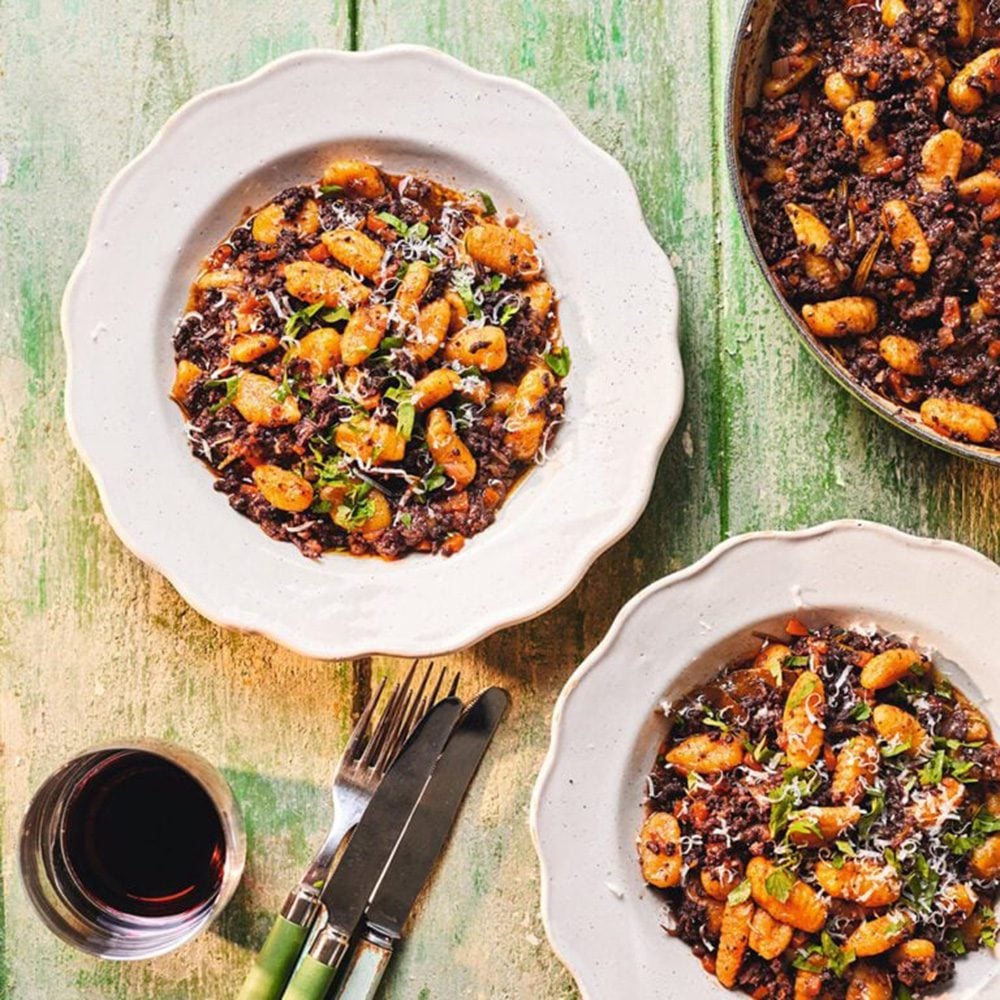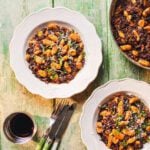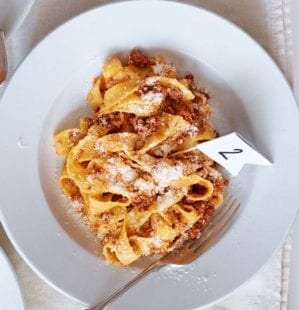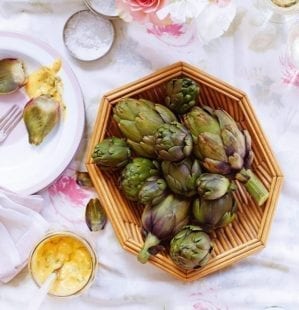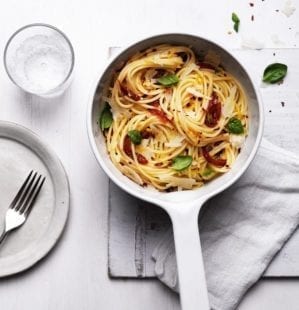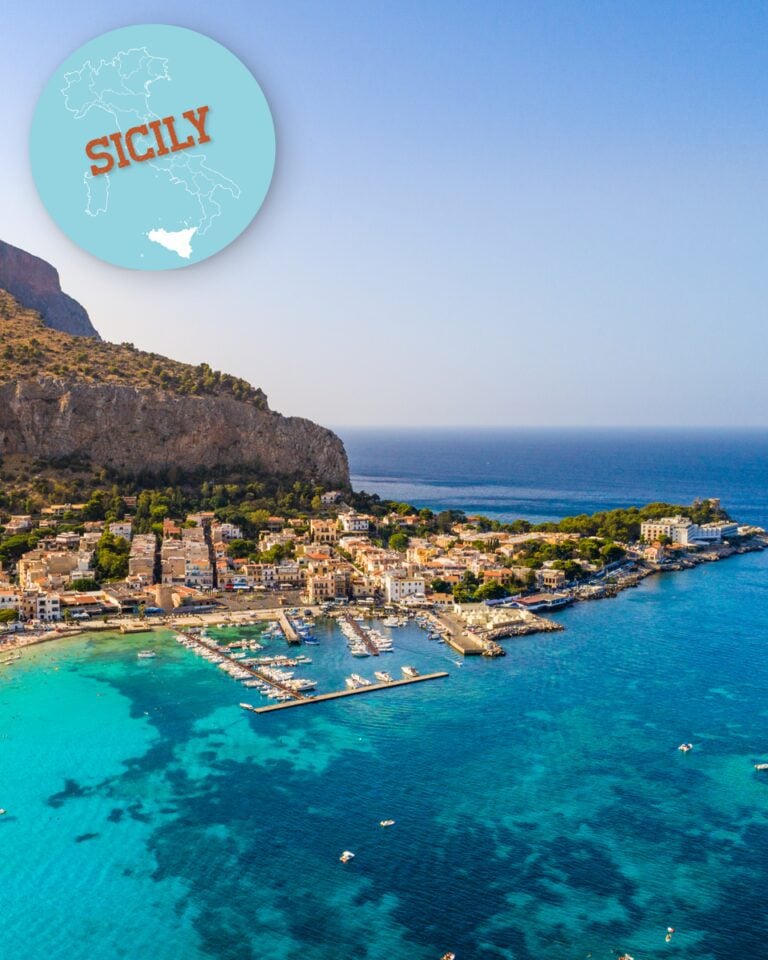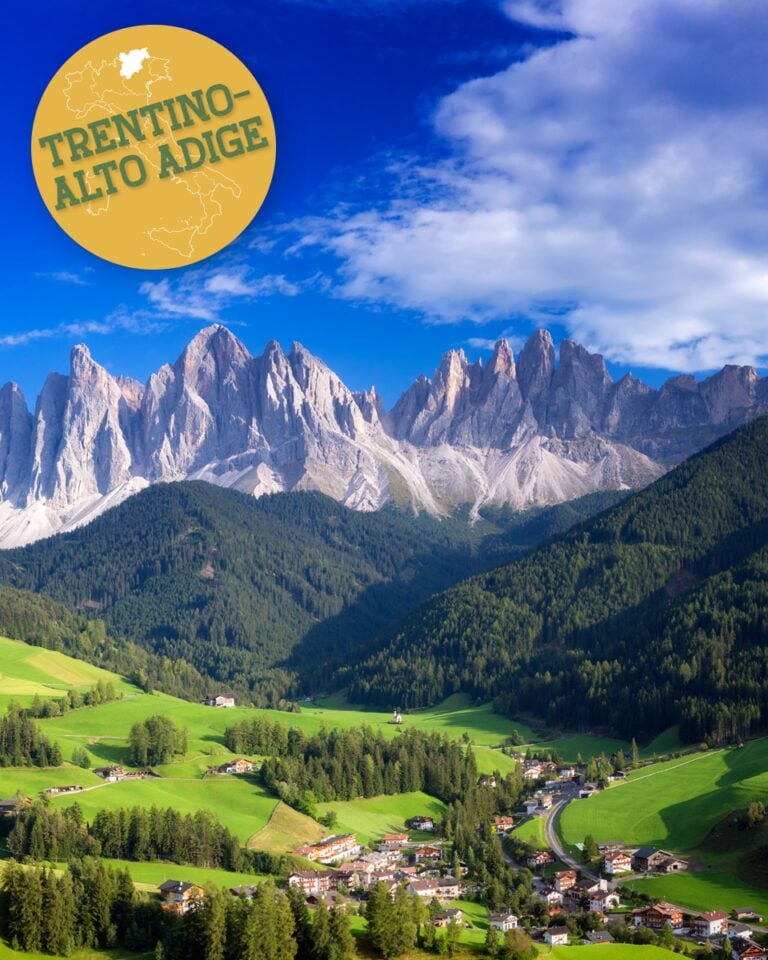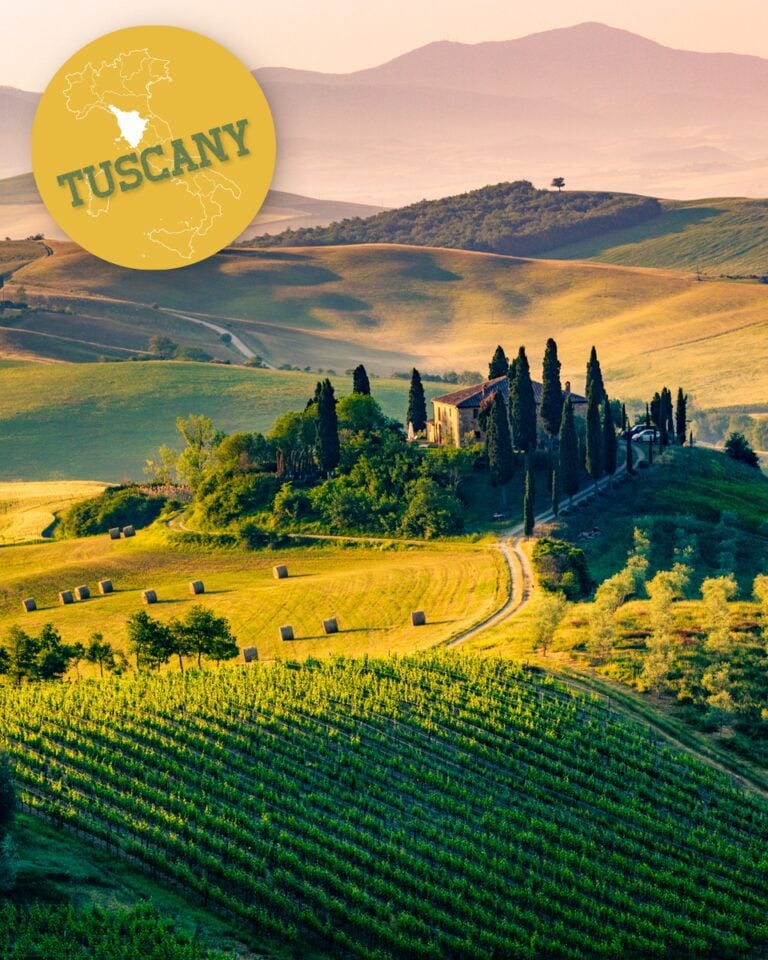Your essential food guide to Sardinia
Discover the food, drink and dishes Sardinia is best known for with our food lover’s guide to the region. We explore which breads and pastas come from Sardinia (including a double-carb ravioli) along with plenty of other foods typical of the area and Sardinian cuisine.
Being an island means Sardinia is a distinct part of Italy. It has its own indigenous language, clothing and music as well as its standout cuisine. There’s obviously a strong Italian influence on the food, but you’ll also find touches of North African, Spanish and French flavour – an echo of the island’s past rulers.
Scroll on (or use the menu below) for a taste of everything that makes the food of Sardinia so special.
Take a food lover’s tour of all 20 Italian regions with delicious. No flights necessary!
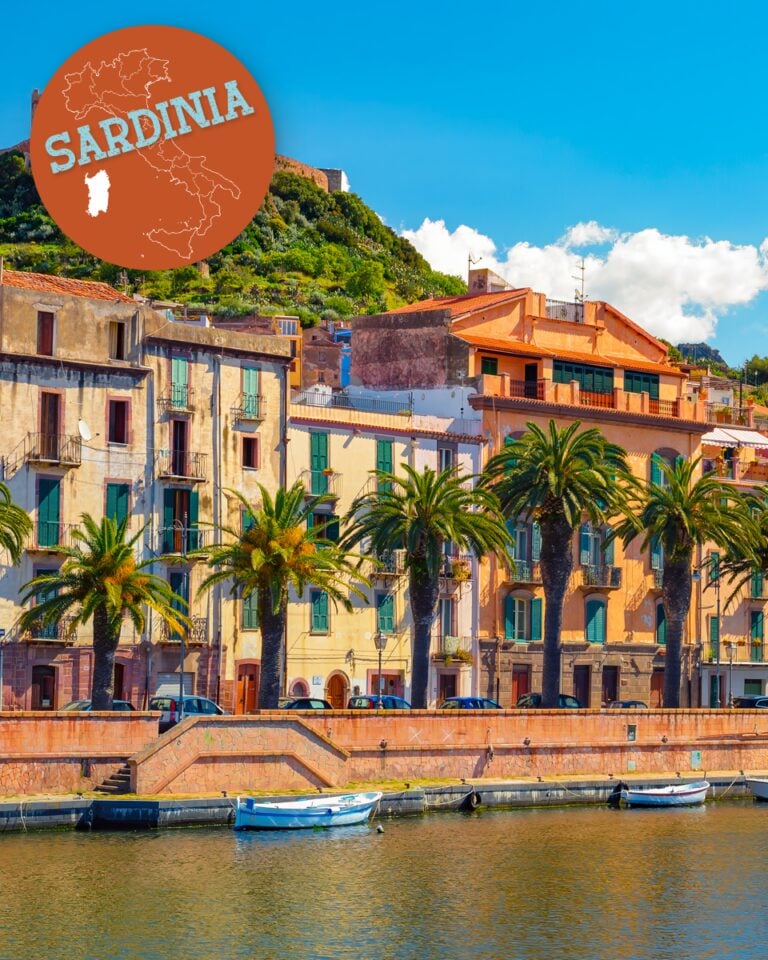
- The must-make recipe from Sardinia
- What are the traditional ingredients in Sardinia?
- What are the famous dishes from Sardinia?
- The best cheeses to try from Sardinia?
- The best wines to try from Sardinia?
- The delicious. team’s top food experiences in Sardinia?
Get to know the food of Sardinia
Sardinia – much like Italy’s other major island Sicily – has been conquered, occupied and ruled by many different cultures over the years. It’s become a tourist hotspot for its incredible beaches, but the uniqueness of the local food scene has become a major draw in recent years too. While most people visit the beautiful coast, the real Sardinia lies further inland, where the inhabitants historically lived off the land.
The importance of semolina (coarsely milled durum wheat) means bread and eggless pasta is ubiquitous, often served with the island’s incredible artichokes or flavoured with its saffron, and it produces the vast majority of pecorino romano, a firm sheep’s cheese exported all over the world. Despite being an island, meat is traditionally more common than fish – the mountainous centre is home to lots of sheep and goats (45% of all Italy’s sheep, in fact) as well as wild game, which play an important role in some of Sardinia’s most beloved dishes.
Our hero recipe from Sardinia

Malloreddus with veal ragù by Antonio ‘Lello’ Favuzzi, head chef at Belvedere
“This recipe holds a special place in my heart. As a young child growing up in Sardinia, we’d often visit a farmhouse ‘agriturismo’ where we would always prepare and enjoy this typical pasta dish. It brings me back to my youth, especially the fond memories of Sundays spent on holidays with my family, savouring this comforting and rustic meal. I lived on the island for about 20 years and feel deeply connected to its land, cuisine and people. The food has played a significant role in my life, shaping my career”, says chef Antonio.
“One thing Sardinians are renowned for is their hospitality. The warmth and welcoming nature of the people on the islands are remarkable.”
Cook Antonio’s Sardinian malloreddus with veal ragù
What are the traditional ingredients in Sardinia?
- Meat Malaria was a real issue in Sardinia right up until the Second World War. That, combined with the many historic coastal invasions of the island, meant most Sardinians steered clear of the shore and lived inland. This is the reason meat plays such a surprisingly important part in the island’s traditional cuisine, be it whole roast suckling pig (su porceddu), ragùs made from the abundant wild boar population, lamb and goat from the hills and mountains or veal and beef from the local Sardo-Modicana cattle breed.
- Bottarga Grey mullet (or sometimes tuna or swordfish) roe is salted, pressed and aged for a few months to create a firm block of salty umami to be shaved or grated over pasta. It’s a real delicacy which Sardinia is famous for and was traditionally something only the poor ate; today, it’s a luxurious ingredient with a price to match.
- Artichokes The island’s artichokes are distinct from those found on the mainland, with a longer shape, a particularly buttery flavour and a hint of bitterness. They’re known as spinosa (spiny) as they have particularly spiky leaves – meaning they’re best left prepared to someone with experience (or very thick gloves!).
- Pompia This unique citrus fruit only grows around the village of Siniscola on the northeast of the island. It looks like a large, knobbly lemon, and has a particularly thick rind which is generally candied or used to flavour liqueurs. It’s a real treat that you’ll rarely find outside of Sardinia.
- Saffron While several Italian regions are known for their saffron, Sardinia is the only place where the spice also features in the local cuisine (traditionally, the saffron-growing regions in the centre and south of the country would export it to the richer cities further north). It’s used in both sweet and savoury dishes, to flavour doughs and sauces, and is often referred to as the ‘red gold’ of the island.
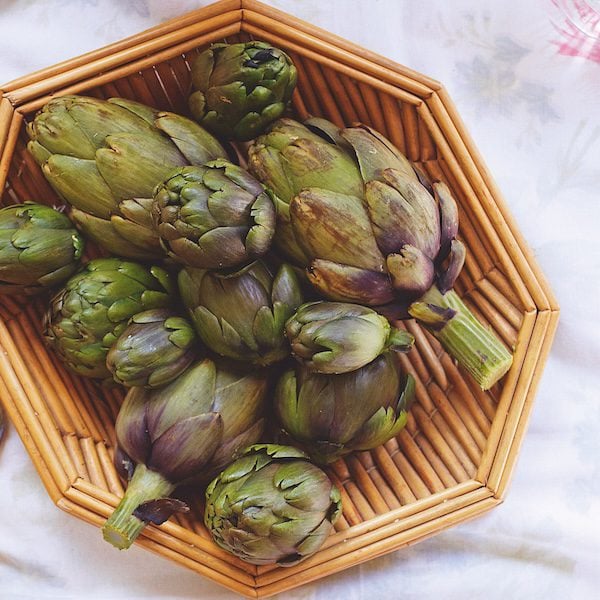
Despite being an island, meat is traditionally more common than fish – the mountainous centre is home to lots of sheep and goats (45% of all Italy’s sheep, in fact) as well as wild game, which play an important role in some of Sardinia’s most beloved dishes
What are the famous dishes from Sardinia?
- Pan carasau Also known as ‘carta di musica’ (sheet music), these wafer-thin flatbreads are generally eaten like crackers with pecorino cheese. They were created to keep shepherds fed during their long stints out in the countryside; the dough is baked twice and – if kept dry – can last up to a year.
- Culurgiones Sardinia’s answer to ravioli is made with an eggless semolina-based pasta dough and stuffed with mashed potato, pecorino cheese and mint. They’re usually daintily plaited on top so they resemble ears of wheat, then boiled and served in a tomato sauce.
- Malloreddus At first glance these may look like gnocchi but they’re distinct in that they don’t contain potato or egg; just semolina, water and sometimes the local saffron. Their name means ‘little calf’, as they’re supposed to look like fat little bulls – although it’s hard to see the likeness – and they’re made by pushing little pinches of dough against either a ridged gnocchi board or, more traditionally, a woven straw basket called a su ciuliri. They’re generally served with rich meaty ragù.
- Fregula (or fregola) Another example of semolina-based pasta from the island, fregola are handmade irregular little spheres not unlike giant couscous (and no doubt a result of the North African influences on the island). They’re often toasted until nutty, then boiled and served in a sauce with clams.
- Seadas A sweet-meets-savoury treat often served at the end of a meal, seadas are deep-fried crunchy semolina parcels containing sheep’s cheese and citrus zest and drizzled with honey. Traditionally the cheese used would be an unaged pecorino, giving them a light, creamy consistency, but many recipes now call for the stronger (and more widely available) aged pecorino – which is just as delicious.
The best cheeses to try from Sardinia
Sardinia produces 95% of all pecorino romano – the most famous (and exported) sheep’s milk cheese in Italy. Sharper and lighter than parmesan, it’s used in much the same way (and often mixed with parmesan for the ultimate flavour combo). But keep an eye out for pecorino sardo – a cheese which ranges from sweet and buttery to more intense. Sardinia’s most famous (or more accurately, infamous) cheese, however, is casu marzu – a sheep’s cheese with live maggots in. It’s an almost mythical product as it is now illegal to sell in the EU, meaning you can only really taste it if you know the right person locally.
The best wines to try from Sardinia
Sardinian wine is quite different from that found on the mainland – and there isn’t a huge amount of it. Most varieties feel French rather than Italian (cabernet sauvignon and grenache are the more popular grapes found in the island’s vineyards), no doubt due to its proximity to Corsica and past conquerors. Most vineyards are on the west side of Sardinia, but winemaking is still a relatively young industry here – although there are producers working to show how the local climate can produce some unique flavours.
The delicious. team’s top food experiences in Sardinia

Laura Rowe, Editorial director
“I was exploring the early morning food market of Santa Teresa di Gallura (after escaping a dodgy 13 euro Airbnb in the middle of the night) and found bulbous, glossy black, mulberry and white-coloured aubergines in all different shapes and sizes; golden courgette flowers curling in the sun; dappled borlotti beans; tomatoes wrinkled and dried by the sun, ready to be rehydrated with delicious grassy olive oil; fresh tomatoes in every shade of green and red you could imagine; big hanging pears of Sardinian provolo (pear-shaped cheese); local honeys scented with all kinds of local flowers; cured meats and more.”
 Claudia Anderson, Account manager
Claudia Anderson, Account manager
“I did a day trip to La Maddalena, where we stumbled across this amazing restaurant up in the higher parts of the island called Locanda del Metro. They had gorgeous local pastas with fabulous outdoor seating. The food had super traditional flavours and the pasta was unlike any other I’d had before. I also had the best lobster pasta I’ve ever had from Il Pescatore in Cala Gonone – the top place to park up after a day of sailing.”
Subscribe to our magazine
Food stories, skills and tested recipes, straight to your door... Enjoy 5 issues for just £5 with our special introductory offer.
Subscribe
Unleash your inner chef
Looking for inspiration? Receive the latest recipes with our newsletter
